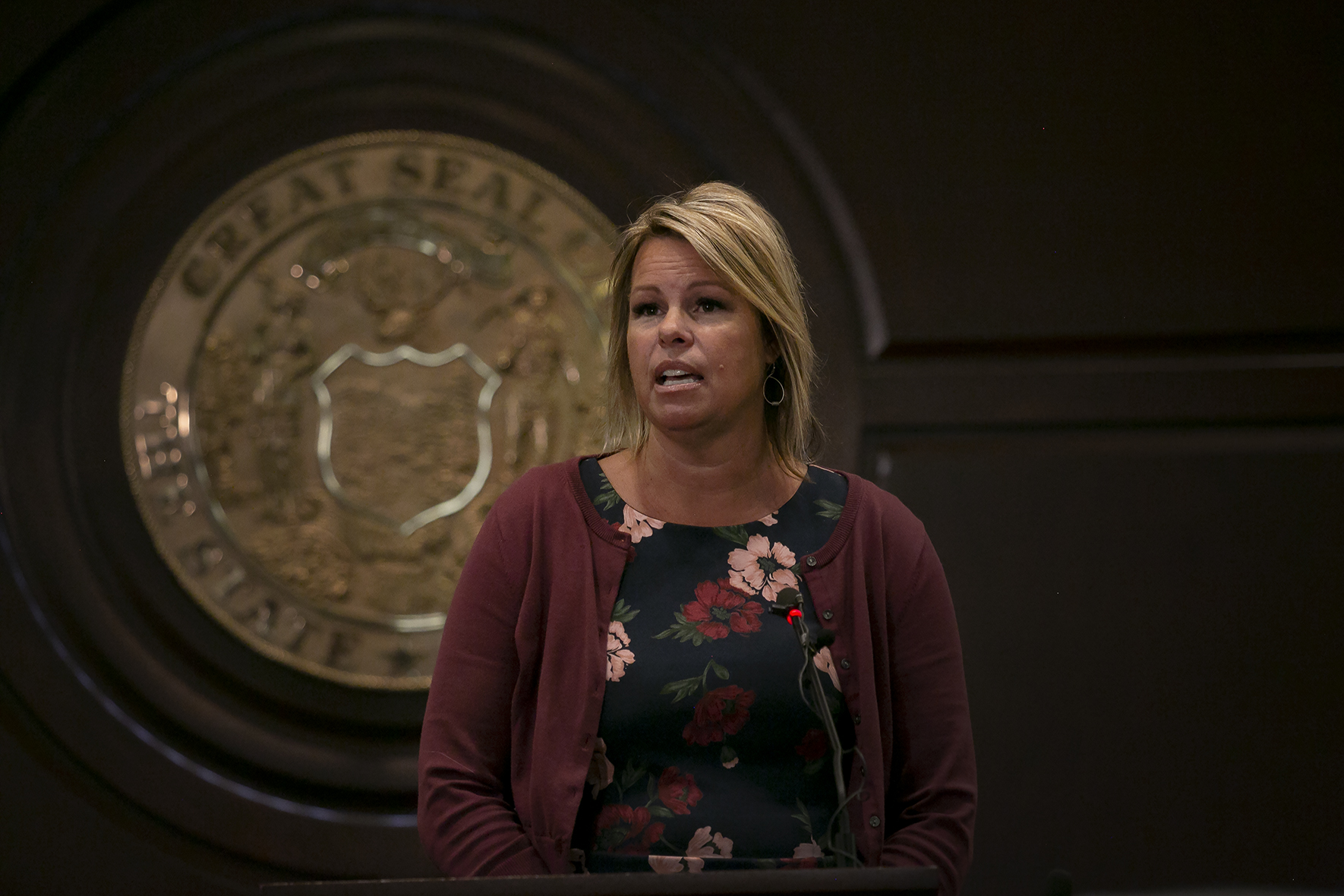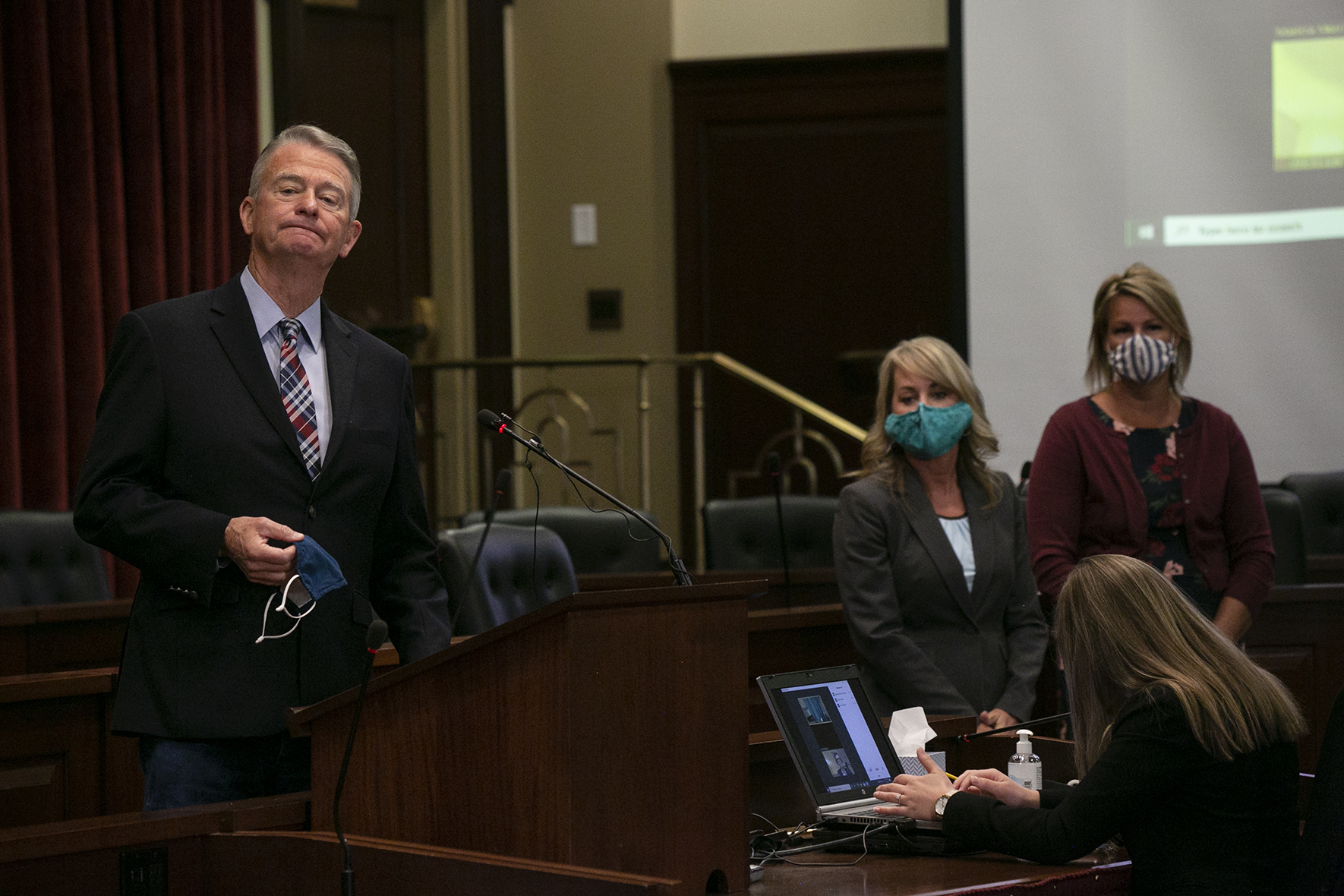
The state will use $99 million of federal coronavirus stimulus money to backfill this year’s K-12 budget.
The $99 million represents a dollar-for-dollar replacement for the money Gov. Brad Little cut from the K-12 budget. But it will be up to school districts and charter schools to figure out where to spend their piece of the money.
“It provides maximum flexibility to help them deal with the pandemic,” said Alex Adams, the head of Little’s Division of Financial Management.
The $99 million federal windfall isn’t a done deal. The decision falls to a gubernatorial committee, chaired by Adams, which has spent months parceling out Idaho’s $1.25 billion share of federal Coronavirus Aid, Relief and Economic Security Act money. That committee meets Tuesday.
But that bit of unfinished business didn’t dampen state leaders’ enthusiasm Friday. State superintendent Sherri Ybarra said the funding represents another sign that Idaho schools are “turning a corner” into the new academic year.
“It couldn’t have come at a better time,” she said.

The funding plan came together quickly. Only in the past few days did the Trump administration give states authority to put additional CARES Act dollars into schools. “We didn’t hesitate to seize the opportunity to provide more support for our schools,” Little said.
And, perhaps fittingly, Friday’s message was muddled. It’s not clear how the money will be spent, and whether that $99 million will actually reverse the cuts Little ordered in the K-12 budget.
In May, Little spelled out a detailed plan to cut $99 million from K-12 — in response to tax collections that shriveled rapidly during the opening weeks of the coronavirus pandemic. Little outlined several line item spending cuts. The largest line item cut: a one-year freeze in the state’s teacher salary career ladder, totaling $26.6 million.
However, don’t expect the $26.6 million to necessarily go back into teacher pay raises. The $99 million will go to schools as discretionary dollars, said Marilyn Whitney, Ybarra’s legislative liaison.
From there, the schools will have to navigate the federal strings that are attached. CARES Act money must be spent by the end of the calendar year, and schools will have to show that they are spending the money to offset coronavirus-related expenses.
Even at that, though, the schools’ discretion is broad, Adams said. The federal guidelines assume that schools have incurred coronavirus-related losses of $500 per student. Based on that — and the fact that the $99 million pencils out to slightly more than $300 per pupil — the local schools could put their money into teacher pay, or classroom technology, or staff training.
Little highlighted one need. He expects schools to spend a considerable chunk of the money to hire teachers, filling needs that have arisen during the pandemic and replacing educators who left the profession due to health concerns. “That’s a big problem,” he said.
Idaho Education Association President Layne McInelly praised Friday’s decision, but pushed for pay raises.
“Since a sizeable portion of the funding holdback was earmarked for educator compensation, these new monies should be directed for that purpose to the greatest extent possible,” he said. “Idaho’s dedicated educators are currently working in high-risk environments and in many cases are doing double duty teaching students in person and online. They are very deserving of the increased salaries promised to them during the last legislative session as part of efforts to improve Idaho’s educator retention rates.”
A Democratic lawmaker — who sits on the budget-writing Joint Finance-Appropriations Committee and the governor’s CARES Act spending panel — called Friday’s news a “federal Hail Mary,” but a welcome development nonetheless.
“We are relieved that the federal funding can be used to restore education funding that the governor cut, but it’s disappointing that the cuts were made in the first place,” said Rep. Melissa Wintrow of Boise.
Little announced another $50 million spending plan, designed to help families who are struggling with the pressures of online school.
The Strong Families, Strong Students plan will provide grants to purchase educational materials, devices and other services to support online learning. Grants will total up to $1,500 per student or $3,500 per family.
The application process will begin in October, after the State Board of Education draws up guidelines. The money could help roughly 30,000 students. “We’ll see how far the money goes,” State Board President Debbie Critchfield said.
Friday’s announcements came on the heels of some encouraging budget news — and renewed debate about Idaho education funding.
On Tuesday, state officials said tax collections are $69 million ahead of projections for the first two months of the new budget year, prompting state leaders to sound a tone of cautious optimism. “We are well positioned to handle the ongoing impacts of COVID-19,” Little said Tuesday.
On Wednesday, the IEA called on Little to plow the robust revenues back into education, reversing the $99 million K-12 cut.
“Dealing with the virus dictates that schools need more personnel and resources, not less,” McInelly said.
However, the revenue reports centered on state tax collections, the linchpin for Idaho education spending. On Friday, Little committed federal dollars to backfill K-12 and launch the Strong Families, Strong Students plan.
